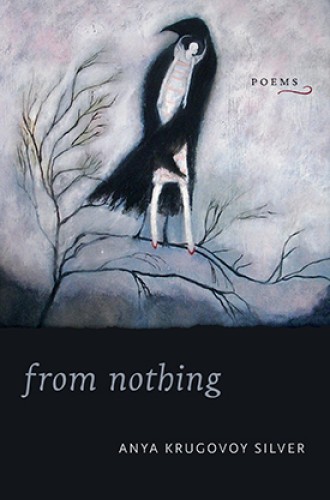Taking her lead—as well as her provocative title—from the John Donne poem that introduces her own introductory poem, Anya Krugovoy Silver continues, in her third poetry collection, to develop her ongoing and—one discovers—efficacious fascinations with illness and loss and with the strenuous, deliberate act of recovery. In this collection, she has found a manner of consolation in her being, as Donne has written, “re-begot / Of absence, darkness, death: things which are not.”
As it happens, these poems are remarkably personal, etched in the midst of the poet’s own trials with illness, suffering, and grief. For all their autobiographical specificity, however, the poems nonetheless partake of, inform, and illumine what we might recognize more generally as our common condition.
The introductory poem, “From Nothing,” asserts:






